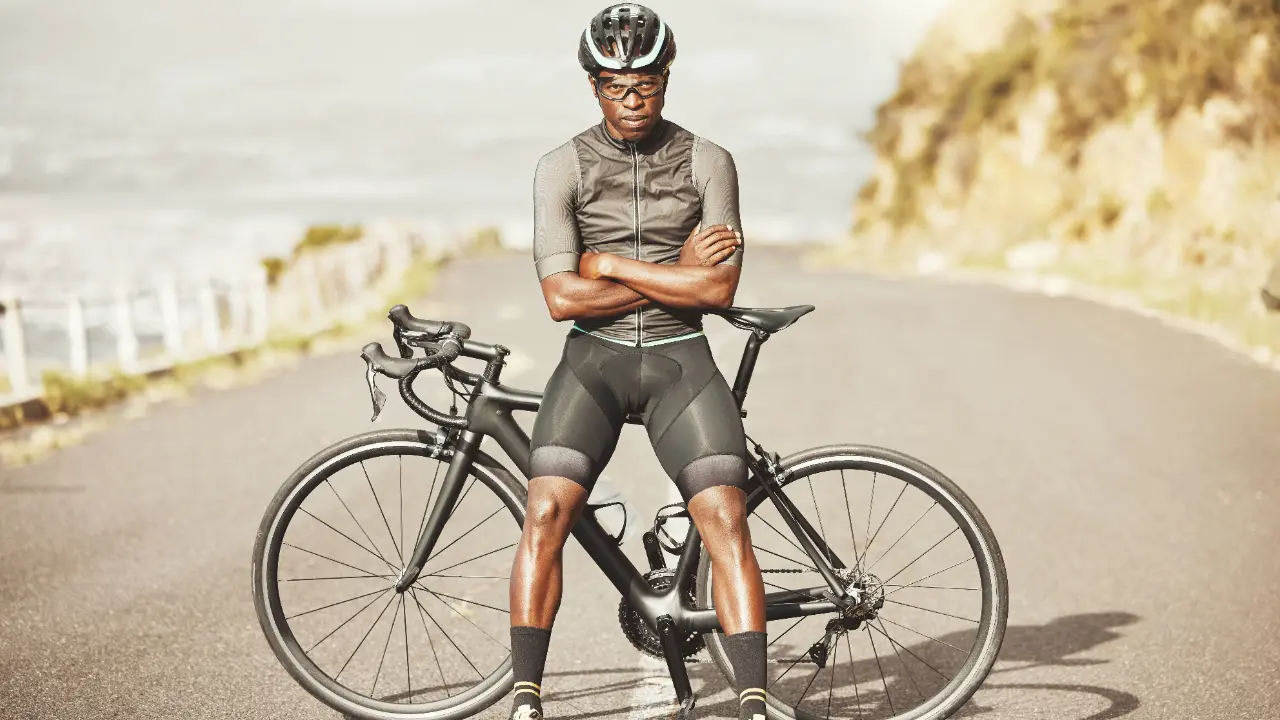Cross-Training for Road Cyclists_ Building a Balanced Fitness
Cross-training is essential for road cyclists seeking to enhance performance, prevent injuries, and achieve a balanced fitness level. This article explores various cross-training activities beneficial for cyclists, including strength training, swimming, running, and yoga, along with specific product recommendations and comparisons to help you choose the best options for your needs and budget. We'll dive into how these activities complement cycling, providing a holistic approach to your training regimen.

Why Road Cyclists Need Cross Training Benefits and Advantages
So, you're a road cyclist, huh? You love the open road, the feeling of the wind in your face, and the burn in your legs. But are you doing everything you can to maximize your performance and stay injury-free? Probably not if you're just riding your bike, day in and day out. That's where cross-training comes in. Think of it as the secret sauce to leveling up your cycling game.
Cross-training isn't just some trendy fitness buzzword. It's about incorporating different types of exercises into your routine to work different muscle groups, improve your overall fitness, and prevent overuse injuries. Cycling is awesome, but it's also repetitive. You're using the same muscles over and over again, which can lead to imbalances and injuries down the road (pun intended!).
Here are some key benefits of cross-training for road cyclists:
- Injury Prevention: Strengthens supporting muscles and improves joint stability, reducing the risk of common cycling injuries like knee pain, back pain, and neck pain.
- Improved Performance: Increases power, endurance, and speed by developing a more well-rounded fitness base.
- Enhanced Recovery: Helps flush out lactic acid and reduce muscle soreness after intense rides.
- Mental Refreshment: Breaks up the monotony of cycling and keeps you motivated.
- Balanced Fitness: Addresses muscular imbalances and improves overall strength and flexibility.
Strength Training for Road Cyclists Building Power and Endurance
Alright, let's talk weights! Many cyclists shy away from strength training, thinking it will make them bulky and slow them down. That's simply not true. When done correctly, strength training can be a game-changer for your cycling performance.
The goal isn't to become a bodybuilder, but to build functional strength that translates to more power on the bike. Focus on compound exercises that work multiple muscle groups simultaneously. Think squats, deadlifts, lunges, push-ups, and rows.
Recommended Exercises:
- Squats: Targets quads, hamstrings, and glutes, essential for generating power on climbs.
- Deadlifts: Strengthens the entire posterior chain, improving posture and stability.
- Lunges: Improves balance and strengthens legs individually, addressing muscle imbalances.
- Push-ups: Works chest, shoulders, and triceps, improving upper body strength for better bike handling.
- Rows: Strengthens back muscles, counteracting the hunched-over cycling position and improving posture.
Product Recommendations:
- PowerBlock Adjustable Dumbbells: Great for home workouts, allowing you to easily adjust the weight as you get stronger. (Price: $300 - $500)
- Resistance Bands: Portable and versatile, perfect for warm-ups, cool-downs, and light strength training on the go. (Price: $15 - $30)
- Kettlebell: Excellent for building explosive power and improving core stability. (Price: $30 - $100 depending on weight)
Using Scenarios and Comparisons:
Imagine you're tackling a steep climb. Stronger legs from squats and lunges will help you power up the hill. A strong core and back from deadlifts will keep you stable and prevent back pain. Improved upper body strength from push-ups will help you maintain control of your bike.
Compared to bodyweight exercises alone, using dumbbells or kettlebells allows you to progressively overload your muscles, leading to greater strength gains. Resistance bands are a great option for travel or when you don't have access to weights.
Swimming for Road Cyclists Low Impact Cardio and Recovery
Swimming is an amazing cross-training activity for cyclists because it's low-impact and works almost every muscle in your body. It's a fantastic way to improve your cardiovascular fitness without putting stress on your joints.
Cycling, while great for your legs, can sometimes lead to tight hip flexors and a rounded back. Swimming helps to counteract these effects by promoting flexibility and opening up the chest and shoulders.
Benefits of Swimming:
- Low Impact: Gentle on joints, making it ideal for recovery days.
- Full Body Workout: Engages all major muscle groups.
- Improved Cardiovascular Fitness: Increases lung capacity and improves endurance.
- Increased Flexibility: Stretches and lengthens muscles, improving range of motion.
- Recovery: Helps flush out lactic acid and reduce muscle soreness.
Product Recommendations:
- Speedo Vanquisher 2.0 Mirrored Swim Goggles: Comfortable and provides excellent visibility. (Price: $20 - $30)
- TYR Sport Men's Thresher Baja Jammer: Reduces drag and improves performance in the water. (Price: $50 - $70)
- Finis Alignment Kickboard: Helps improve body position and kicking technique. (Price: $25 - $40)
Using Scenarios and Comparisons:
After a long, hard ride, a swim can be the perfect way to recover. The water provides a soothing, weightless environment that helps to relax your muscles and reduce inflammation. Plus, the gentle resistance of the water can help to flush out lactic acid and speed up recovery.
Compared to other forms of cardio, like running, swimming is much easier on your joints. This makes it a great option for cyclists who are prone to knee pain or other overuse injuries.
Running for Road Cyclists Building Endurance and Mental Toughness
Yeah, I know what you’re thinking. More cardio? But hear me out! Running can be a fantastic complement to cycling, especially for building endurance and mental toughness. While cycling primarily works your quads and glutes, running engages your hamstrings and calves more effectively, creating a more balanced lower body workout.
Benefits of Running:
- Improved Cardiovascular Fitness: Increases VO2 max and improves overall endurance.
- Strengthened Bones and Joints: Weight-bearing activity helps to increase bone density and strengthen joints.
- Mental Toughness: Pushing through the discomfort of running can improve mental resilience, which can translate to better performance on the bike.
- Burn Calories: Great way to burn extra calories and maintain a healthy weight.
Product Recommendations:
- Brooks Ghost 14 Running Shoes: Comfortable and supportive, ideal for road running. (Price: $120 - $150)
- Garmin Forerunner 245 Music GPS Running Watch: Tracks your pace, distance, heart rate, and more. (Price: $300 - $350)
- Nathan SpeedDraw Plus Insulated Flask Handheld: Keeps you hydrated on long runs. (Price: $30 - $40)
Using Scenarios and Comparisons:
During the off-season, running can be a great way to maintain your fitness level without putting too much stress on your cycling muscles. It can also be a good way to break up the monotony of cycling and keep you motivated.
Compared to cycling, running is a higher-impact activity, so it's important to start slowly and gradually increase your mileage. If you're prone to knee pain or other joint problems, be sure to listen to your body and take rest days when needed.
Yoga for Road Cyclists Flexibility Core Strength and Mental Focus
Don't underestimate the power of yoga! It's not just about stretching and relaxation. Yoga can be incredibly beneficial for cyclists, improving flexibility, core strength, and mental focus.
Cycling can lead to tight hamstrings, hip flexors, and lower back muscles. Yoga helps to counteract these effects by stretching and lengthening these muscles, improving flexibility and range of motion. A strong core is essential for maintaining stability on the bike and preventing back pain. Yoga poses like planks, boat pose, and side planks can help to strengthen your core muscles.
Benefits of Yoga:
- Improved Flexibility: Stretches and lengthens tight muscles, improving range of motion.
- Increased Core Strength: Strengthens core muscles, improving stability and balance.
- Reduced Stress: Promotes relaxation and reduces stress levels.
- Improved Mental Focus: Cultivates mindfulness and improves concentration.
Product Recommendations:
- Manduka PRO Yoga Mat: Durable and provides excellent grip. (Price: $120 - $150)
- Yoga Blocks: Helps to modify poses and improve alignment. (Price: $15 - $30 per block)
- Yoga Strap: Assists with stretching and reaching difficult poses. (Price: $10 - $20)
Using Scenarios and Comparisons:
After a long ride, a yoga session can be the perfect way to unwind and relax your muscles. Yoga can also be a great way to prepare your body for a ride, improving flexibility and range of motion.
Compared to static stretching, yoga incorporates dynamic movements and breathwork, which can help to improve circulation and reduce muscle tension. It’s also a great way to improve your mental focus and cultivate mindfulness, which can be beneficial both on and off the bike.
Finding the Right Balance Integrating Cross Training into Your Cycling Schedule
The key to successful cross-training is finding the right balance. You don't want to overdo it and risk injury, but you also want to make sure you're getting enough of a benefit. Start slowly and gradually increase the intensity and duration of your cross-training activities. Listen to your body and take rest days when needed.
Here are some tips for integrating cross-training into your cycling schedule:
- Schedule it in: Treat your cross-training sessions like important appointments and schedule them into your calendar.
- Start slowly: Don't try to do too much too soon. Gradually increase the intensity and duration of your workouts.
- Listen to your body: Pay attention to your body and take rest days when needed.
- Vary your activities: Don't just stick to one type of cross-training. Mix it up to keep things interesting and work different muscle groups.
- Make it fun: Choose activities that you enjoy and that will keep you motivated.
So, there you have it! Cross-training is an essential part of any serious road cyclist's training regimen. By incorporating a variety of activities into your routine, you can improve your performance, prevent injuries, and achieve a balanced fitness level. Now get out there and start cross-training!
:max_bytes(150000):strip_icc()/277019-baked-pork-chops-with-cream-of-mushroom-soup-DDMFS-beauty-4x3-BG-7505-5762b731cf30447d9cbbbbbf387beafa.jpg)





